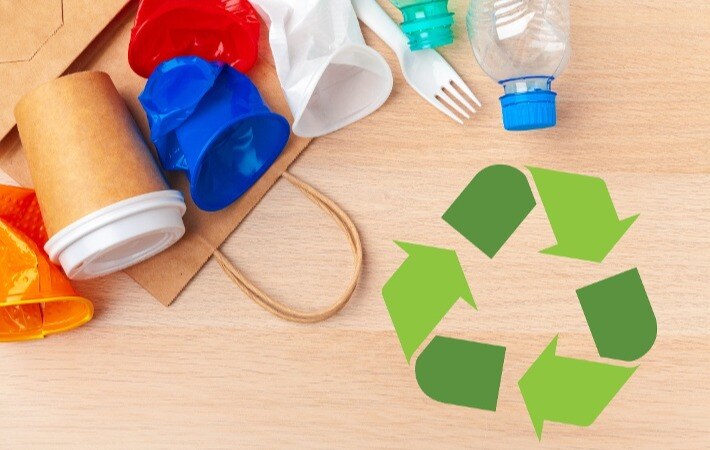Waste Management at International Towers: Leading the Way Towards a Greener Future

At International Towers, we believe sustainability isn't just a buzzword—it's an integral part of our operations and lifestyle
From cutting-edge waste management systems to interactive community events, we're dedicated to making a meaningful impact on the environment.
Our waste signage has recently changed in line with our approach to waste management. Make sure you read the new signs so we're all moving in the same direction.
Commercial Waste & Recycling Handbook
This handbook outlines the waste management guidelines for commercial tenants at International Towers Sydney.
International Towers Sydney seeks to be at the forefront of best practice waste management in order to minimise the impact that our onsite operations have on the environment. As part of our renewed waste management goals, we have set a diversion from landfill target of 80% for operational waste.
A variety of waste streams and processes have been implemented to assist in achieving this diversion target.
International Towers Sydney Building Management encourages tenants to follow the waste guidelines presented in this handbook to help achieve better recycling outcomes for the building and support the broader sustainability efforts of our site.

New Waste Stream Signage
 |
 |
 |
 |
Mixed Recycling goes in the yellow bins.
- Keep it clean and dry! Rinse containers before placing them in the mixed recycling bin.
Food Waste goes in the green bins.
- No food packaging, even if it’s compostable!
Paper and Cardboard goes in the blue bins.
- No soiled cardboard, paper towels, or TetraPak drink cartons.
Dry Waste goes in the brown bins.
- Accepted: clean plastic bags, empty coffee cups, stationery items, paper towels, textiles, empty drink cartons.
- Not accepted: food, liquids, organics, glass, e-waste, hazardous materials.

Please keep Dry Waste DRY
No food or liquid in the dry waste bin, if it's not dry we have to send it to Landfill.
Our Dry Waste system which is designed for items unsuitable for traditional recycling but still recoverable, such as clean plastic bags and empty coffee cups. By continuing to eliminate the general waste option, we're hoping to encourage more conscious waste disposal, while working towards our goal of 80% diversion from landfill.
This targeted sorting increases recycling potential, reduces contamination in other streams, and significantly decreases landfill-bound waste, aligning with the building's broader sustainability goals and enhancing overall waste management efficiency. Let's get down and dirty with the Dry Waste details.
As the name suggests, the Dry Waste stream must be DRY for it to be diverted from landfill and processed into an alternative fuel source. Recently we have seen increased contamination in the Dry Waste bins in the form of food and liquids (coffee). There is zero tolerance for food waste and liquids in the Dry Waste stream.
What do we need to do?
Please dispose all food into the Organics (food) bins. Please empty coffee and other liquids into a sink before disposing your cup into the Dry Waste bin.
To read more about the Lifecycle of Waste download the PDF below:

Waste Signage "Stop Signs"
In order to achieve the best recycling outcomes, we have made the addition of ‘stop signs’ to our waste signage. When you see one of these, it’s a reminder for you to stop, and check that your waste item is in an acceptable condition for disposal.


Changes to compostable packaging
Compostable packaging – What has changed and why?
The NSW EPA now prohibits compostable plastics and fibre-based materials like paper towel, bamboo, timber, or cardboard packaging from Organics (food) recycling due to:
- The presence of PFAS chemicals in some compostable packaging, which may cause environmental harm.
- The negligible nutrient value these products contribute to the composting process.
Additionally, research suggests that increasing compostable plastic content in compost may negatively impact its safe application to land and adversely affect earthworm and plant growth.
What does that mean for me as a tenant?
We will be refreshing waste streams and education across the precinct while exploring innovative ways to reduce packaging reliance.
Moving forward:
Please await further updates regarding waste management practices and opportunities at Barangaroo, including potential pilot projects for reusable packaging alternatives. Collaboration for optimal waste management and diversion outcomes is crucial, and appreciation is extended to all Barangaroo tenants for their ongoing cooperation and support.

